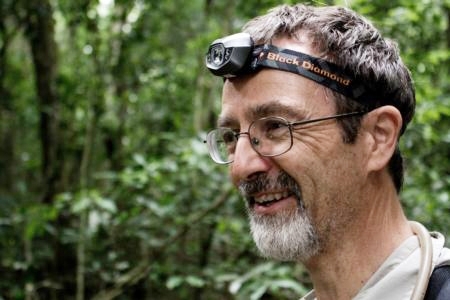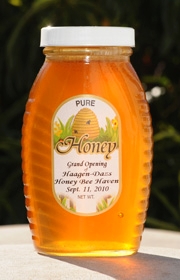Posts Tagged: Häagen-Dazs Honey Bee Haven
What do you know about ants?
If you think they're just uninvited guests at your picnic or something to spray or stomp, think again.
They're marvelous creatures, as any ant specialist will tell you.
You can learn about them from noted ant specialist Phil Ward, professor of entomology, UC Davis Department of Entomology and Nematology, when he presents a program Friday, July 17, on the native ants found in the Häagen-Dazs Honey Bee Haven, UC Davis campus.
The event, free and open to the public, is set from noon to 1:30 p.m. in the half-acre bee garden, located on Bee Biology Road, next to the Harry H. Laidlaw Jr. Honey Bee Research Facility, west of the central campus.
Among the native ants at the haven are:
- Dorymyrmex insanus (workers small, ~3 mm long, black; conspicuous crater-shaped nests in bare soil)
- Dorymyrmex bicolor (workers small, ~3 mm long, bicolored, dull orange and black; conspicuous crater-shaped nests in bare soil)
- Prenolepis imparis (also known as the “winter ant” or “winter honey ant”; workers small (3-4 mm long), brown, with shiny gaster; inconspicuous nests in soil)
- Formica moki (sometimes called “field ants”; workers medium-sized (6 mm long), with a dark head, orange-brown mesosoma (thorax) and silvery-gray gaster; nest in soil)
Images of these species can be found on the AntWeb, a website hosted and supported by the California Academy of Sciences that provides specimen-level data, images, and natural history of ants.
Approximately six other species of native ants reside in the vicinity of the garden, including Formica aerata, Pogonomyrmex subdentatus, and Solenopsis xyloni. The introduced Argentine ant (Linepithema humile) occurs around the Bee Biology building, but it appears not to have colonized the bee garden.
Attendees will learn how to observe and identify California native ants, and learn about the differences between bees and ants, said Christine Casey, director of the Häagen-Dazs Honey Bee Haven, which is owned and operated by the UC Davis Department of Entomology and Nematology. It was planted in the fall of 2009.
The program is part of a brown bag lunch series. For more information on the ant program, see the flier and/or access the haven web site.
Meanwhile, if you want to learn more about ants, be sure to download (free!) Dr. Eleanor's Book of Common Ants, an entry-level book by entomologist/science writer Eleanor Rice; entomologist/ant specialist/photographer Alex Wild (he received his doctorate in entomology from UC Davis, studying with Phil Ward, and is now a curator at the University of Texas, Austin); and designer Neil McCoy.
"Of the nearly 1,000 ant species living in North America, fewer than 30 are true pests, and fewer still actually can hurt us," Rice points out in her book. "We might not notice them, but they're there, and they shape, literally shape, our world," she writes. "Look at the colossal trees in your forest, the plants around your lawn. Ants, like winnow ants, plant the forest understory, ultimately contouring plant distribution that becomes those giants of trees, animal homes, abounding green life. Other ants help turn soil (more than earthworms in some places!), break up decomposing wood and animals, and keep the canopy healthy."
Ants are also crawling in the international spotlight now. Did you know the North American release of the superhero movie, Ant-Man, is Friday, July 17?
That makes Friday, July 17, a good day for ants.
Author: Kathy Keatley Garvey
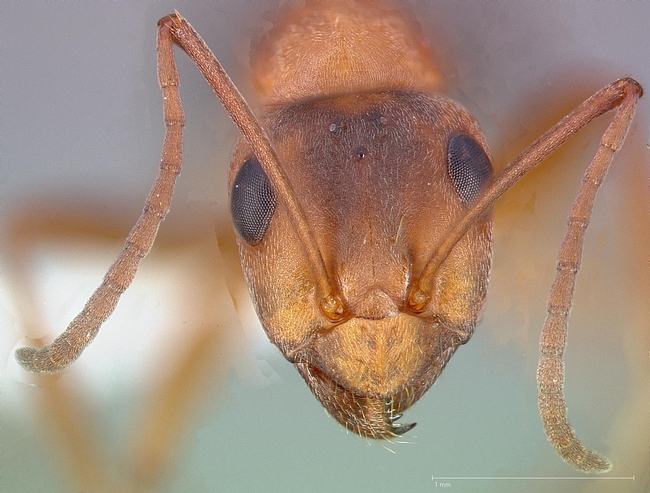
Formica moki (Photo by Phil Ward, www.entweb.org)
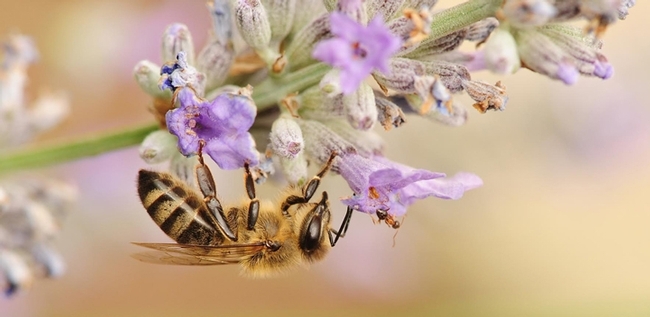
A honey bee and its cousin, an ant, a velvety tree ant, Liometopum occidentale. (Photo by Kathy Keatley Garvey)
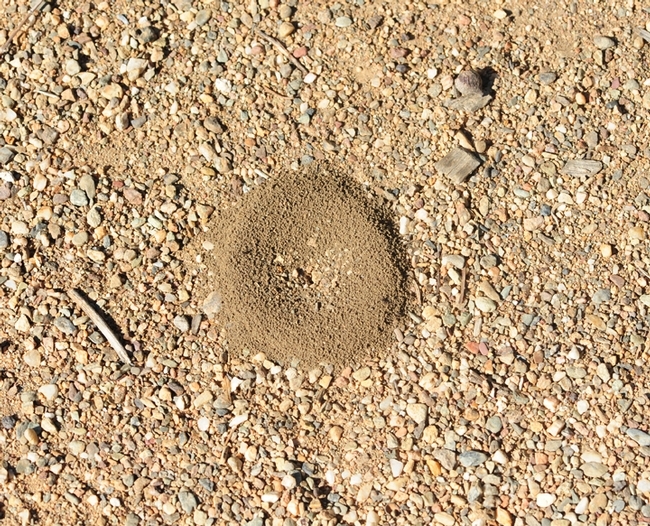
An ant crater, the work of a species in the genus Dorymyrmex. (Photo by Kathy Keatley Garvey)
A honey of an event
Honey, sometimes described as the soul of a field of flowers, seized the spotlight at a recent benefit in Sacramento for UC Davis honey bee research.
The occasion: The Bee Informed event.
The site: The historic ballroom of the Citizen Hotel, Sacramento.
“Honey is one of my favorite ingredients to use in desserts because of its beautifully nuanced flavors and gorgeous colors,” said Bee Informed coordinator Elaine Baker (top left) of the Citizen Hotel/Grange Restaurant. “It’s just magical.”
The event, open to the public, raised $600 for the Häagen-Dazs Honey Bee Haven at the Harry H. Laidlaw Jr. Honey Bee Research Facility, UC Davis.
The event buzzed with bee and honey aficionados—and folks who just wanted to learn about bees and the products they produce.
For the occasion, Baker created mini-desserts made with Sacramento-area honey. Guests sipped cocktails laced with honey and sampled a variety of honey provided by area beekeepers. Honey ranged from dark buckwheat to a light tupelo. Tupelo is a honey that doesn’t granulate.
Baker, who blogs about food, came up with the idea of a “Bee Informed” event to raise public awareness about the plight of the honey bees.
Keynote speaker Eric Mussen (below), UC Davis extension apiculturist, updated the crowd about colony collapse disorder (CCD) and talked about the health of honey bees.
“The news media wrongfully reports that 33 percent to 35 percent of our nation’s honey bees are dying of CCD,” he said.
“Thirty-three to 35 percent is the average; only 25 percent of beekeepers have reported CCD in their colonies. Some lost 40, 80 or 100 percent of their hives due to CCD. So CCD is not killing 33 percent of our bees.”
CCD, the mysterious phenomenon characterized by adult bees abandoning the hive, may be due in part to an undiscovered microbe, but the malady “is going to be with us for awhile,” he said.
The Häagen-Dazs Honey Bee Haven, open to the public year around, is a half-acre bee friendly garden planted last fall next to the Laidlaw facility. It serves as a year-around food source for the Laidlaw bees and other pollinators; raises public awareness about the plight of bees; and provides educational opportunities for visitors, who can learn what to plant in their own yards to attract pollinations.
It is also a research garden; native pollinator specialist Robbin Thorp, emeritus professor of entomology, has found more than 50 species of bees, including leafcutter bees, metallic green sweat bees and bumble bees, at the site over the last two years.
Baker described the Bee Informed event as a great success. “Fantastic speakers, terrific vendors, delicious cocktails and desserts, not to mention all the beautiful honey.” A drawing for prizes included honey from Sacramento-area beekeepers and specially bottled honey made by UC Davis bees.
When asked to share one of her favorite honey recipes, she provided this one. Bon Appétit!
Buckwheat Honey Tea Bread
Makes 1 9x5” loaf
In a bowl whisk together:
2-1/4 cups all-purpose flour
3/4 cup sugar
1 tablespoon orange zest, finely chopped
2 teaspoons baking powder
1/2 teaspoon baking soda
1/2 teaspoon ginger
1/2 teaspoon cinnamon
1/2 teaspoon kosher salt
Set aside. In a mixer with a paddle attachment combine:
3/4 cup buckwheat honey
3/4 cup hot water
3 tablespoons brandy
4 tablespoons butter, melted
Blend on low until combined. Add dry ingredients and blend on low speed just until combined. Put into a greased 9x5” loaf pan. Bake at 350F about 50-60 min. or until the bread tests done and is a deep golden brown color. Remove from oven and let cool until barely warm, then remove from the pan. In a small saucepan heat up a small amount of the buckwheat honey with a little bit of water to make a glaze and brush on the top of the loaf. Let cool completely. This bread is best served the same day.
If you don’t have a mixer this recipe can also be mixed by hand. You can use any flavor of honey you like – wildflower, orange blossom, etc. Elaine Baker likes buckwheat honey because of the assertive flavor and beautiful color.
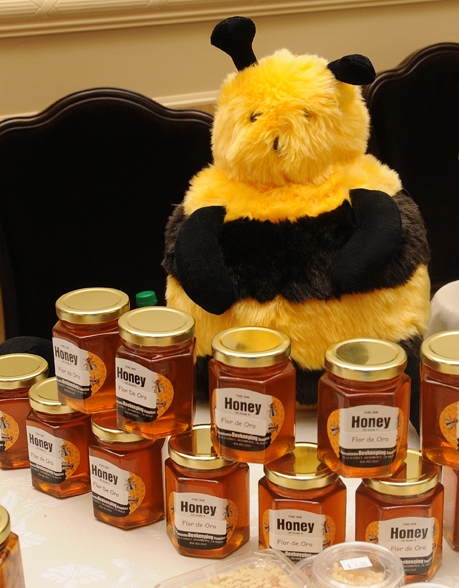
Show me the honey
Show me the honey
When the grand opening celebration of the Häagen-Dazs Honey Bee Haven at the University of California, Davis, takes place on Saturday, Sept. 11 from 10 a.m. to 2 p.m., this will also be a celebration of the honey bee.
The declining bee population, exacerbated by the mysterious disease called colony collapse disorder, makes us appreciate bees all the more. One-third of the food we eat is pollinated by bees.
Enter the Häagen-Dazs Honey Bee Haven.
Planted last fall next to the Harry H. Laidlaw Jr. Honey Bee Research Facility on Bee Biology Road, the honey bee haven is a half-acre bee friendly garden designed to provide a year-around food source for bees, increase awareness of the plight of the honey bee, and offer educational experiences for human visitors.
Visitors can learn the importance of honey bees and glean ideas on what to plant in their own gardens to attract bees and other pollinators. Here’s the award-winning design created by a Sausalito team. (Be sure to check out the Häagen-Dazs educational website.)
At the Sept. 11 grand opening, visitors also will gain a deeper appreciation of honey, sometimes called “the soul of a field of flowers.” Honey tasting, coordinated by Extension apiculturist Eric Mussen, member of the UC Davis Department of Entomology, is scheduled to be one of the activities at the celebration.
Of the more than 300 unique types of honey produced in the United States, among the most common floral sources are alfalfa, avocado, basswood, buckwheat, clover, eucalyptus, fireweed, orange blossom, safflower sages and tupelo.
A single bee can collect about 1/2 teaspoon of honey in her lifetime. To make a pound of honey, 560 worker bees must gather nectar from two million flowers, and fly a total of about 55,000 miles.
Like to cook with honey? Here are some recipes provided by the National Honey Board.
Applesauce Cake
1/2 cup butter, softened
1 cup honey
1 egg
1 teaspoon vanilla
1-1/4 cups all-purpose flour
1 cup whole wheat flour
1 teaspoon baking soda
?1 teaspoon ground cinnamon
1/2 teaspoon salt
1/2 teaspoon ground nutmeg
1/4 teaspoon ground cloves
1/4 teaspoon ground allspice or ginger
1 cup chopped dates
1/3 cup chopped walnuts
1 cup unsweetened applesauce
Cream butter in large bowl. Gradually beat in honey until light and fluffy. Add egg and vanilla; mix well. Combine dry ingredients in medium bowl; reserve 2 tablespoons flour mixture. Combine dates, walnuts and reserved 2 tablespoons flour mixture in small bowl; set aside. Add remaining flour mixture and applesauce alternately to creamed mixture, beginning and ending with flour mixture. Stir in date mixture. Pour batter into greased 13 x 9 x 2-inch pan. Bake at 325 degrees F for 35 minutes or until wooden pick inserted near center comes out clean.
Cranberry Oat Bread
3/4 cup honey
1/3 cup vegetable oil
2 eggs
1/2 cup milk
2-1/2 cups all-purpose flour
1 cup quick-cooking rolled oats
1 teaspoon baking soda?
1 teaspoon baking powder
1/2 teaspoon salt
1/2 teaspoon ground cinnamon
2 cups fresh or frozen cranberries
1 cup chopped nuts
Combine honey, oil, eggs and milk in large bowl; mix well. Combine flour, oats, baking soda, baking powder, salt and cinnamon in medium bowl; mix well. Stir into honey mixture. Fold in cranberries and nuts. Spoon into two 8-1/2 x 4-1/2 x 2-1/2-inch greased and floured loaf pans.
Bake in preheated 350 degrees oven 40 to 45 minutes or until wooden toothpick inserted near center comes out clean. Cool in pans on wire racks 15 minutes. Remove from pans; cool completely on wire racks. Makes 2 loaves.
Golden Cornbread
3 cups yellow cornmeal
1 cup whole wheat flour
2 tablespoons baking powder
1 teaspoon salt
2 cups buttermilk or low-fat yogurt
1/2 cup butter, melted
1/2 cup honey
3 eggs, beaten
Combine cornmeal, flour, baking powder and salt in large bowl. Combine buttermilk, butter, honey and eggs in separate large bowl. Stir buttermilk mixture into flour mixture just until moistened. Pour into greased 12x8x2-inch baking pan. Bake at 350 degrees for 25 minutes or until golden brown. Serves 8.

Honey Bee

The Beekeepers

